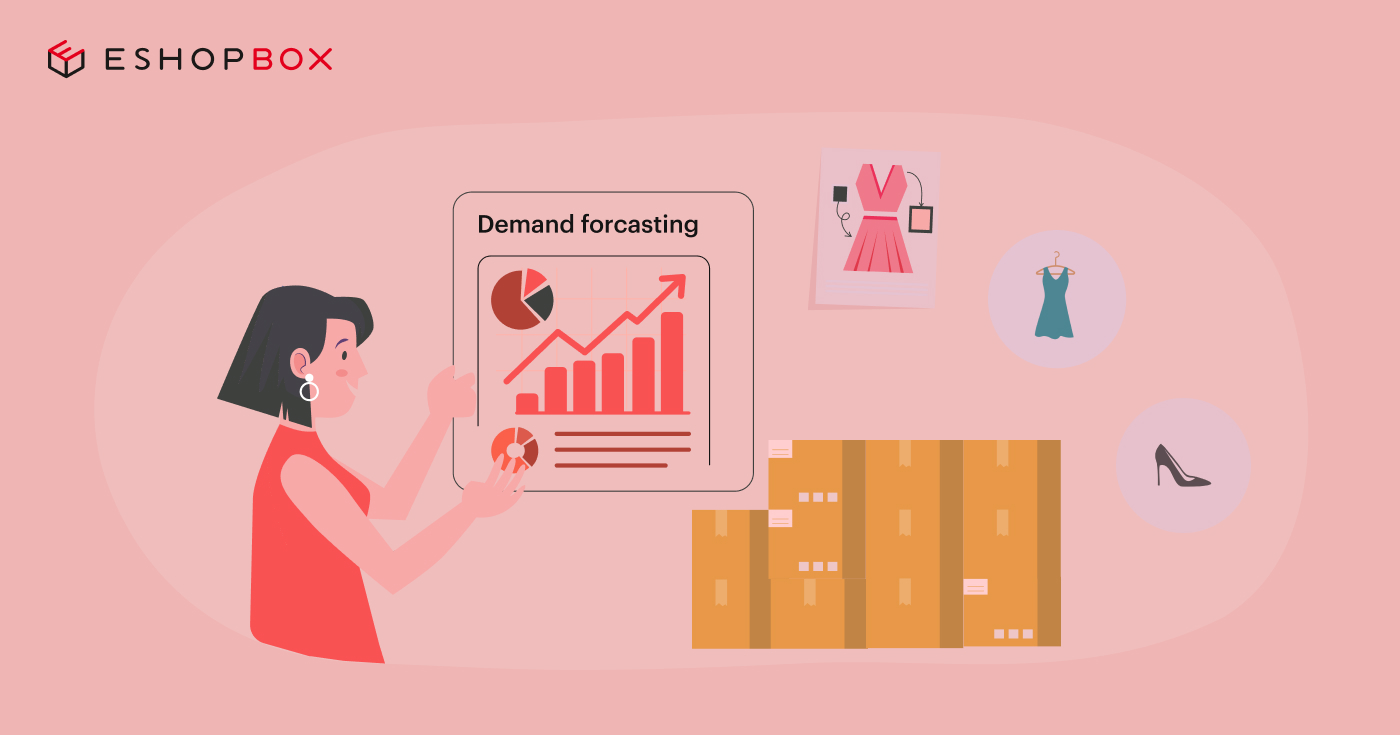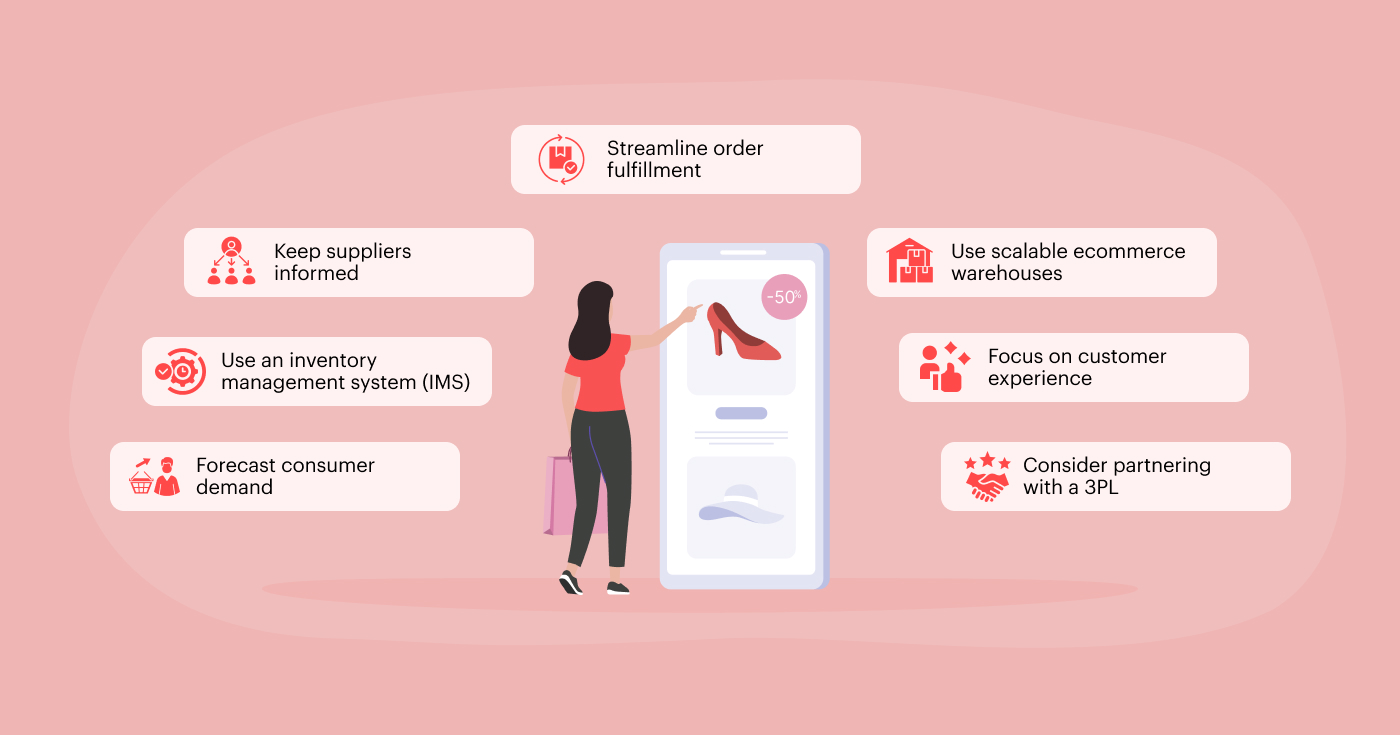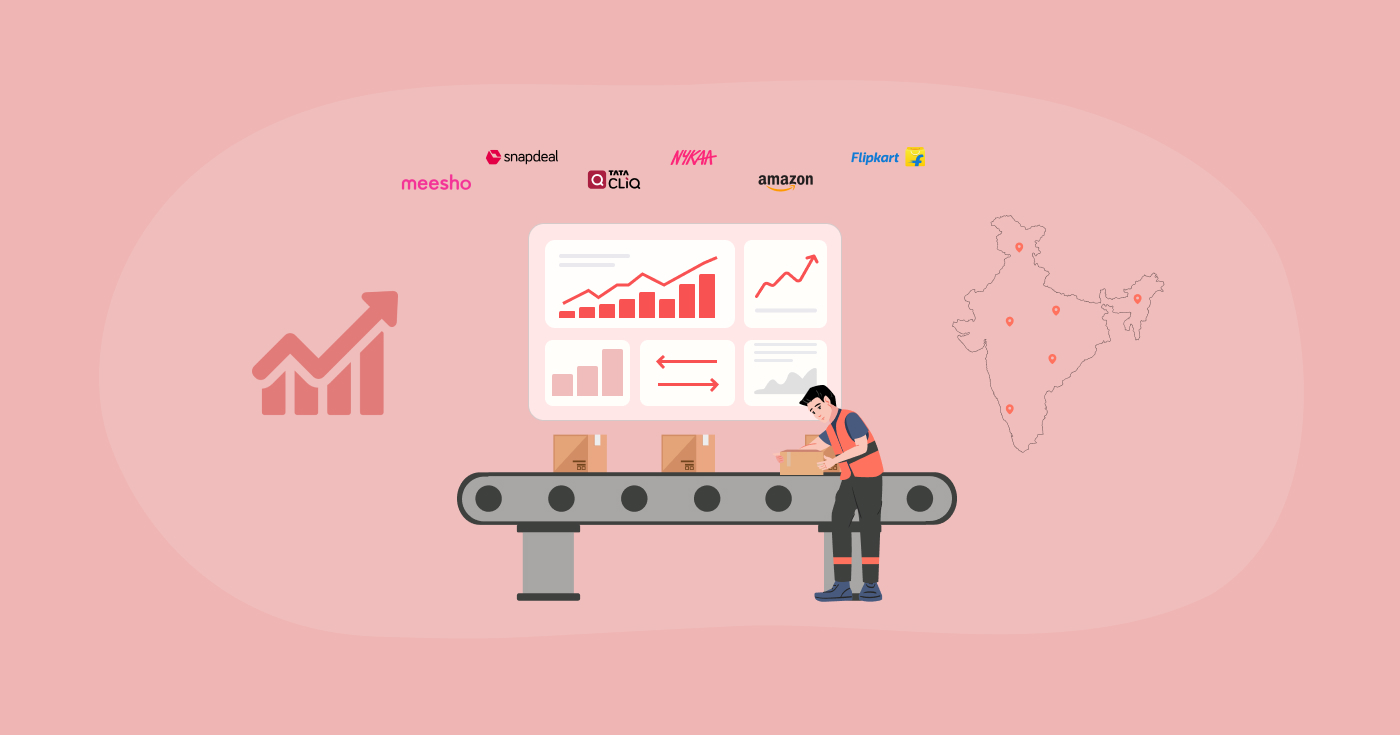
Get the latest from
Eshopbox

Demand Forecasting in Fashion Ecommerce: How Fulfillment Providers Drive Efficiency and Growth
The fashion industry is one of the most dynamic sectors of ecommerce—trends shift overnight, customer preferences evolve rapidly, and competition is relentless. One thing that sets successful brands apart is their ability to anticipate demand accurately. Enter demand forecasting in fashion ecommerce, a practice that uses data, analytics, and market insights to predict what customers will buy, when, and in what quantities.
For fashion retailers and D2C brands, demand forecasting is not just about predicting sales—it directly impacts inventory levels, warehousing costs, and shipping efficiency. As ecommerce grows, fulfillment is becoming a differentiator. In fact, 69% of shoppers are less likely to return after a poor delivery experience. This makes efficient forecasting tightly linked with the choice of ecommerce shipping logistics providers.
In this blog, we’ll dive deep into what fashion ecommerce demand forecasting means, its key elements, how to implement it effectively, and why your choice of ecommerce fulfillment provider plays a critical role in making it successful.
What is demand forecasting in fashion ecommerce?

Demand forecasting is the process of estimating future customer demand for specific products based on past sales data, market trends, seasonality, and external factors like social media influence.
For instance, a fast-fashion brand may need to anticipate which type of dress will trend in the upcoming wedding season, while a luxury label may forecast demand for limited-edition sneakers. This level of forecasting is particularly crucial in fashion, where trends shift rapidly — a style can go viral one month and vanish the next.
According to McKinsey’s State of Fashion 2025 report, more than 60% of fashion executives rank demand forecasting and inventory management as their top supply chain priorities. Accurate forecasting enables brands to maintain lean inventory while consistently meeting customer expectations.
In short, demand forecasting in fashion ecommerce is the bridge between customer desires and the backend operations of storage, fulfillment, and shipping.
What are the key elements of effective fashion demand forecasting?
Accurate fashion forecasting requires more than guesswork—it combines data, tools, and operational alignment. Here are the key elements:
1. Sales data analysis
Your past sales are the most reliable indicator of future demand. By analyzing previous years’ seasonal spikes, product performance, and regional sales, you can identify patterns. For example, if maxi dresses sell out every summer, that trend is likely to repeat.
2. Trend tracking & market signals
Fashion is heavily influenced by social media, pop culture, and influencers. Forecasting tools must factor in external signals such as Instagram trends, TikTok virality, and fashion week highlights.
3. Seasonality and festive demand
Demand for fashion is rarely consistent year-round. Festivals, holidays, and wedding seasons drive sales in specific regions. Brands must forecast not only what sells but also when.
4. Inventory & warehousing strategy
Forecasting should be linked with your storage capabilities. Partnering with ecommerce warehousing solutions allows brands to keep stock distributed across multiple fulfillment centers. This reduces shipping time and cost, ensuring your forecast translates into a better customer experience.
5. Customer insights & returns data
High return rates are common in fashion (often 20–30% in apparel ecommerce, according to Statista). Including returns data in forecasting ensures brands don’t overestimate demand.
6. Technology & AI tools
AI and machine learning models are transforming forecasting. Algorithms analyze large datasets, spot hidden trends, and even predict demand for new product launches. According to Deloitte, retailers using AI in demand forecasting have improved accuracy by 10–20%.
7. Alignment with fulfillment partners
The best forecast is useless without execution. Working with the right ecommerce fulfillment provider ensures your stock is optimally stored, picked, packed, and shipped in line with demand. If you forecast a surge in a specific metro city, a distributed warehouse fulfillment service ensures that your inventory is placed closer to that demand.
How to implement demand forecasting in your fashion brand?
Implementing demand forecasting in fashion ecommerce requires more than data analysis—it demands creating a comprehensive system that integrates data insights, supplier relationships, warehouse operations, and fulfillment processes. Here’s a roadmap, with strategies proven to help brands ace seasonal spikes:

1. Forecast consumer demand
The foundation of forecasting is analyzing consumer demand patterns. Use past sales data to identify seasonal spikes (festivals, weddings, holidays) and slowdowns. This helps you plan the right amount of inventory, preventing costly overstocking or disappointing stockouts. For fashion brands, this could mean anticipating surges in festive wear during Diwali or winter jackets during the holiday season.
2. Use an inventory management system (IMS)
An IMS is essential for precision. It tracks inventory at the SKU level, covering sizes, colors, and product variations—while providing insights like bestselling products and average daily orders. This data-driven clarity ensures you never miss trends and helps you reorder at the right time. A robust IMS also reduces human error and supports proactive replenishment.
3. Keep suppliers informed
Even the best forecasts are estimates. That’s why building strong supplier relationships is critical. Share your seasonal demand projections early and clarify lead times to scale up quickly when demand surges. Keeping suppliers aligned ensures that you won’t lose sales due to delayed replenishment.
4. Streamline order fulfillment
High demand can overwhelm your operations if processes aren’t streamlined. Establishing Standard Operating Procedures (SOPs) for picking, packing, and shipping is key. Automation—such as RFID tagging, barcode scanning, and even conveyor belts—reduces errors and accelerates fulfillment. By preparing your order flow in advance, you ensure customers receive their products quickly and accurately.
5. Use scalable ecommerce warehouses
Seasonal demand requires flexibility. Instead of locking into fixed storage, leverage scalable ecommerce warehousing solutions that let you expand or reduce space based on demand. With on-demand warehousing, you can quickly increase capacity during festivals or sales seasons, then scale back during slower months. Many brands achieve this by partnering with warehouse fulfillment services or 3PLs with distributed networks across India.
6. Focus on customer experience
Forecasting is not only about stock—it’s also about delivering memorable experiences. During demand spikes, don’t let fulfillment chaos ruin your customer relationships. Use branded packaging, proactive shipping updates, and fast delivery to strengthen trust and drive repeat purchases. Since fashion ecommerce often has high return rates, a smooth return process is equally critical to customer satisfaction.
7. Consider partnering with a 3PL
Working with a specialized ecommerce fulfillment provider like Eshopbox can be a game-changer. Eshopbox’s distributed network of fulfillment centers, powered by automation, ensures ultra-fast delivery with 99.65% order accuracy. Their technology integrates directly with platforms like Amazon, Flipkart, and Shopify—orders are auto-routed to the nearest warehouse, cutting shipping costs and improving delivery times.
The role of Eshopbox in enhancing supply chain efficiency
Eshopbox goes beyond basic fulfillment to actively support demand forecasting and seasonal preparedness. Here’s how they help fashion brands stay ahead:

- Warehouse management system (WMS): Automates receiving, picking, packing, and shipping—minimizing errors and ensuring fast turnaround, even during demand spikes.
- Real-time inventory visibility: Businesses can track stock movement across multiple warehouses, preventing overselling and enabling intelligent order routing.
- Seamless platform integration: Direct integration with major marketplaces and D2C platforms ensures real-time order syncing and zero manual errors.
- Flexible storage solutions: With 3PLs like Eshopbox occupying **36% of India’s warehousing space**, brands can tap into scalable infrastructure to expand during festive peaks and reduce costs during off-peak seasons.
- Data-driven demand planning: Advanced analytics tools integrate ERP, OMS, and logistics data to provide SKU-level insights, enabling accurate forecasting and optimized replenishment.
By blending forecasting with flexible fulfillment, Eshopbox ensures fashion brands don’t just survive seasonal demand but thrive—meeting customer expectations while keeping costs under control.
Bottomline
Fashion ecommerce is unpredictable, but that doesn’t mean brands should leave their inventory to chance. Demand forecasting empowers fashion brands to balance customer expectations with operational efficiency. By analyzing data, tracking trends, and leveraging technology, brands can reduce stockouts, minimize overstocks, and improve profitability.
However, accurate forecasting alone isn’t enough. Execution depends on choosing the right ecommerce fulfillment provider—one that offers scalable warehouse fulfillment services and reliable ecommerce shipping logistics. Together, forecasting and fulfillment create a competitive advantage that ensures fashion brands not only survive but thrive in a crowded marketplace.
As customer expectations rise—62% of online shoppers expect free delivery in under 3 days (PwC report)—fashion brands that master demand forecasting and partner with capable ecommerce fulfillment companies will stay ahead.
The future of fashion ecommerce belongs to brands that predict demand, align supply chains, and deliver excellence right to their customers’ doorsteps.
Connect with our fulfilment expert today.
Talk to salesRelated Articles
The 2026 ultimate guide to D2C fulfilment in India
How Eshopbox Helps Brands Deliver Faster with a Pan-India Warehouse Network?
Fast Isn’t the Goal Anymore: Why Smart Ecommerce Fulfillment Wins Customer Trust













